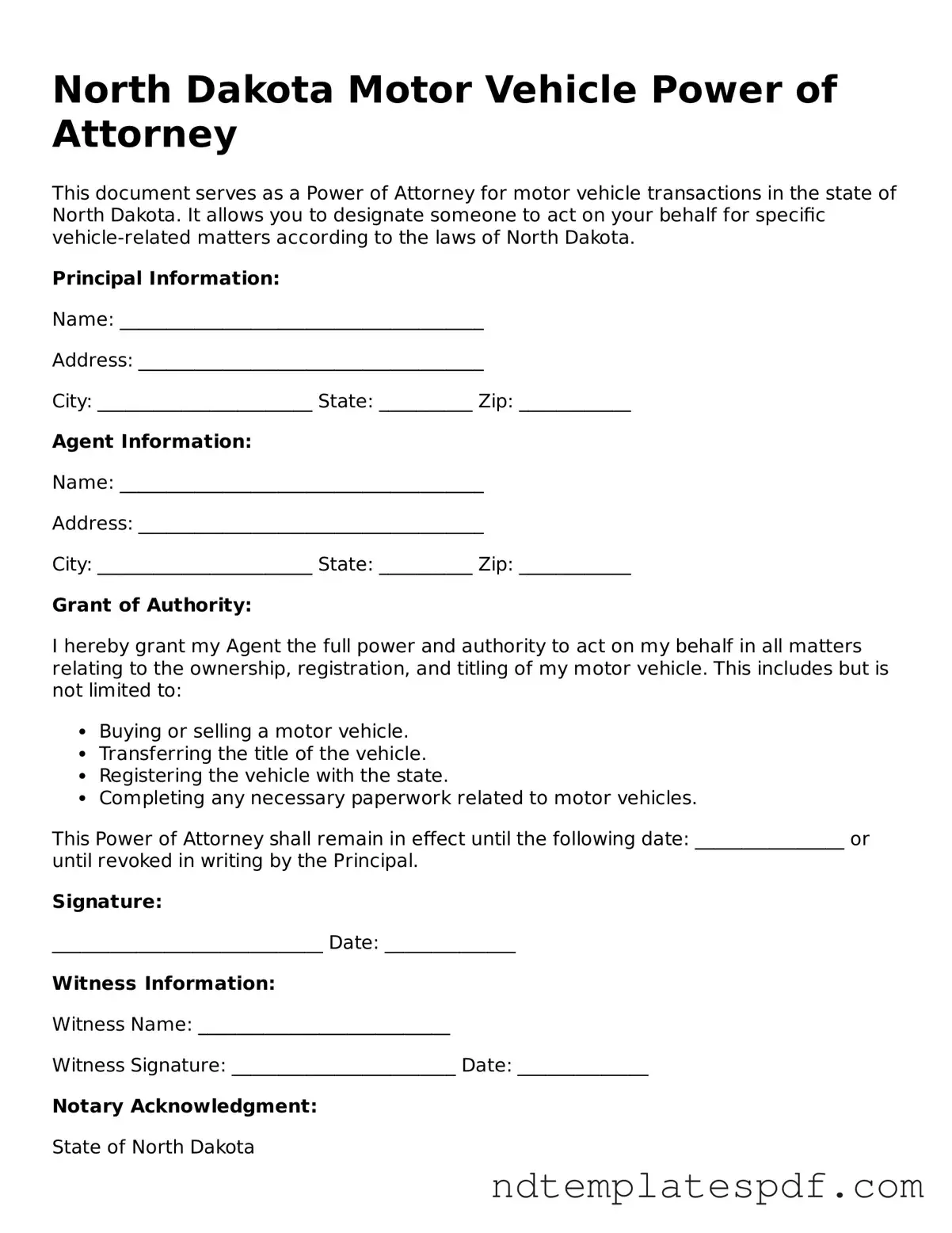Legal North Dakota Motor Vehicle Power of Attorney Document
The North Dakota Motor Vehicle Power of Attorney form is a legal document that allows an individual to designate another person to act on their behalf in matters related to motor vehicle transactions. This form can be particularly useful when the vehicle owner is unable to be present for the completion of necessary paperwork, such as title transfers or registration. By utilizing this form, individuals ensure that their interests are represented and that the process proceeds smoothly.
Fill Out Document Now
